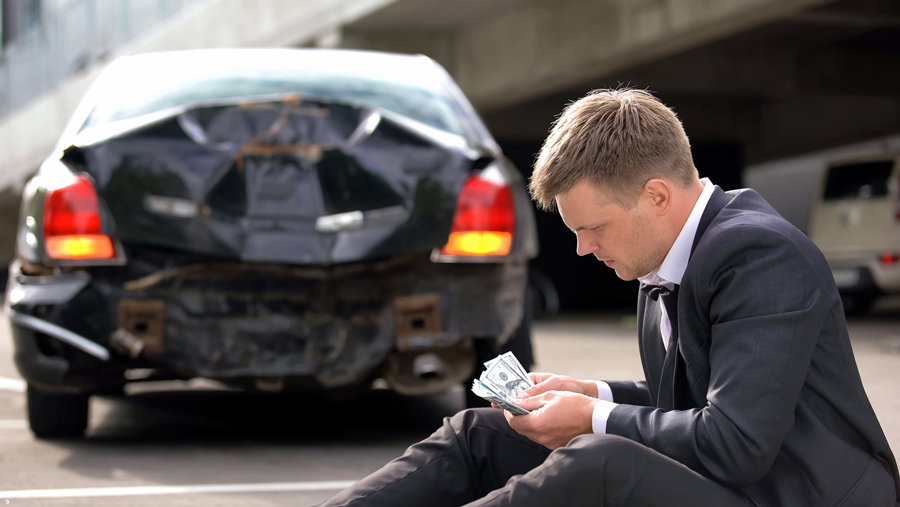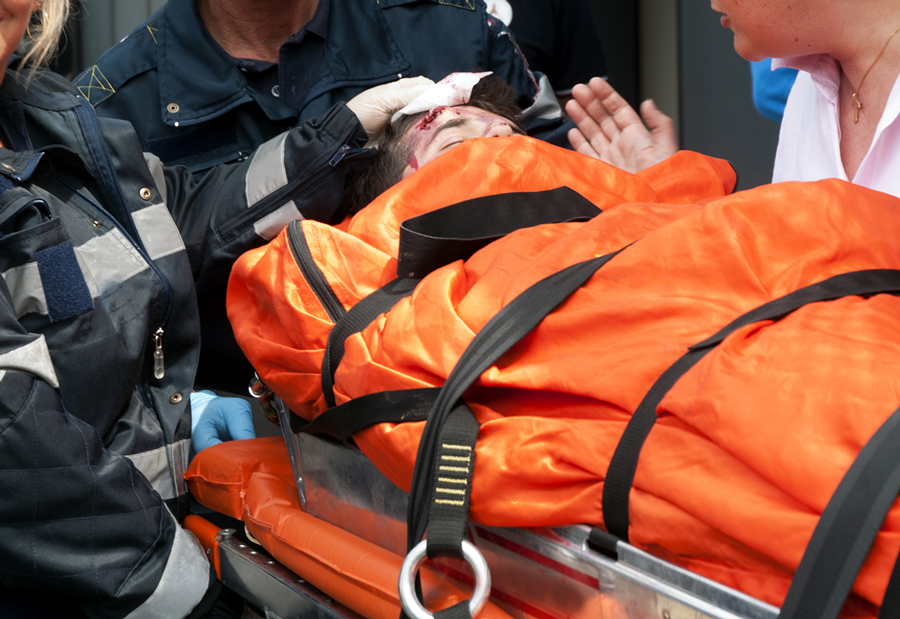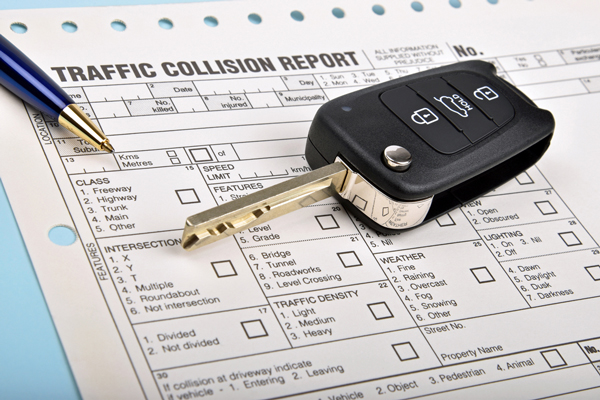BY ANN BARRON

When it comes to a traffic accident, the direct costs resulting from the collision, such as vehicle repair or towing charges, are generally easy to quantify. However, the indirect costs associated with the crash are often overlooked and can take a toll on a chauffeured transportation company in more ways than you might think.
Consider this hypothetical situation: A luxury minibus is involved in an accident while on its way to pick up a group in New Jersey heading to an important business dinner in New York City. The bus driver sustains no injuries, but the minicoach—which is empty except for the driver—has to be towed from the accident scene. Another bus has to be dispatched to accommodate the group. The other vehicle involved in the collision is totaled, and its two occupants suffer serious injuries. A claim is filed with the operator’s insurance company by the injured parties. An accident investigation determines that the bus driver was at fault, and the transportation company is legally “liable” for the crash.
Let’s take a look at the repercussions this accident may have on the luxury transportation operation.
Direct Costs
Direct costs can usually be placed into two categories—third-party loss and first-party loss. In our example above, the third-party losses are the accident-related expenses incurred by the occupants of the car involved in the crash, such as replacement of the totaled automobile and medical expenses. First-party losses refer to the operator’s losses and would include damage to the bus and towing expenses.
 Direct costs can, and often do, add up and must be considered, but we must look beyond these figures to evaluate the REAL cost of the accident to a transportation company.
Direct costs can, and often do, add up and must be considered, but we must look beyond these figures to evaluate the REAL cost of the accident to a transportation company.
Indirect Costs
Indirect costs are all the additional costs associated with the accident that will come right out of the limousine company’s wallet. While some indirect costs are easy to assign a dollar amount once they are identified, others may be more difficult to assess. Let’s examine some of the indirect costs that may arise from our hypothetical accident:
❱ Fines and penalties –The bus in the above scenario is operating under Federal Motor Carrier Safety Administration (FMCSA) regulations, and any failure to comply with those laws may result in severe penalties, including heavy fines, suspension of the limousine company’s ability to operate, and even criminal charges levied by the Department of Transportation (DOT).
↹ Safety Measurement System (SMS) profile – Since the accident resulted in injuries and vehicles were towed from the crash scene, it will be included in the calculation of the company’s Crash Indicator BASIC Percentile Rank in the FMCSA’s Safety Measurement System (SMS). If the bus driver is issued a citation following the accident, then that violation will be placed into his data, as well as the carrier’s data, in the SMS. What’s more, the accident and any resulting traffic violations will adversely affect the company’s SMS results for 24 months, and some of this data is viewable by the public.
 ❱ Accident investigation and legal proceedings – During the accident investigation, some employees may be taken away from their normal job functions. The driver involved in the crash and a company representative will be asked to provide answers to interrogatories and produce certain records through the retained defense attorney. In many cases, opposing counsel will request to depose not just the driver, but other company personnel as well. Preparation for the deposition could take several sessions over the course of multiple days, while the deposition itself could last several hours. To put forth the finest defense and place the company in the best light, it is essential for a company representative to be present at the trial. For most cases, trials last four to six days, but can last 10 days or more for complicated cases with multiple parties. It is also important to note that the operator’s commercial auto insurance policy typicall will cover the cost of claims made against the company because of the crash, but it does not pay for expenses related to criminal defense for violations of motor vehicle laws or regulations.
❱ Accident investigation and legal proceedings – During the accident investigation, some employees may be taken away from their normal job functions. The driver involved in the crash and a company representative will be asked to provide answers to interrogatories and produce certain records through the retained defense attorney. In many cases, opposing counsel will request to depose not just the driver, but other company personnel as well. Preparation for the deposition could take several sessions over the course of multiple days, while the deposition itself could last several hours. To put forth the finest defense and place the company in the best light, it is essential for a company representative to be present at the trial. For most cases, trials last four to six days, but can last 10 days or more for complicated cases with multiple parties. It is also important to note that the operator’s commercial auto insurance policy typicall will cover the cost of claims made against the company because of the crash, but it does not pay for expenses related to criminal defense for violations of motor vehicle laws or regulations.
❱ Employee turnover – After a review of the details of how the crash occurred, company management may decide to terminate the bus driver’s employment. Further examination of the accident may also lead to the dismissal of other personnel for failure to identify and follow up on safety violations. Terminating and replacing those employees can cost thousands of dollars. Typical expenses associated with employee turnover include, but are not limited to:
↹ Separation costs – These are the costs an employer incurs during the termination process an employee such as severance pay, unemployment insurance claims, accrued vacation days, continued benefits, administrative costs associated with processing the termination, etc.
↹ Productivity costs – Included in this category are the hours of lost productivity that add up as positions remain unfilled, the time other employees spend picking up the slack, as well as their possible overtime pay.
↹ Recruitment costs – In order to fill the vacant positions, the company will likely need to advertise the jobs online and/or hire recruitment services. There are also expenses associated with reviewing candidate applications, interviewing, pre-employment screenings, and reference checks. For the driver position, additional costs may be incurred from checking driver employment history and motor vehicle records (MVRs), background checks, DOT physical examinations, pre-employment substance abuse testing, road tests, and driver profile testing.
↹ Employee onboarding – If the ground transportation company is successful in hiring a new driver and any other terminated employees, it will then be faced with onboarding costs, which may include sign-on bonuses plus orientation and training expenses to get the new hires up-to-speed and administrative costs for staff involved.
❱ Loss of revenue – While undergoing repairs, the bus is not producing revenue, and future trips assigned to that vehicle will have to be handled by another bus—if one is available. In addition, hiring a new driver during the present commercial driver shortage will not likely be quick or easy, so some trips may have to be canceled.
❱ On-going expenses – While the bus is being repaired and/or sitting idle without a driver, it is still incurring costs—e.g., taxes, vehicle payments, insurance premiums, registration and permit fees, and depreciation.
❱ Company reputation – The group mentioned in our scenario was not physically involved in the crash, but it was severely delayed in getting to an important business dinner. Consequently, the group’s coordinator may decide to not use the operator for any future travel needs. The accident, and the subsequent media coverage, may also negatively impact the company’s relationships with other clients and potential customers.
❱ Insurance deductible and premium costs – Though the transportation company in our scenario has commercial auto insurance, it will still be responsible for the deductible amount on the policy. After the accident, the operator may also see a premium increase in all lines of coverage (physical damage, liability, workers’ compensation, etc.). The company may even have a difficult time retaining insurance coverage due to its blemished loss history.
❱ Punitive damages – In cases where the defendant’s conduct is found to be intentional, willful, or malicious, the courts may permit an award of punitive damages in addition to compensatory damages. Punitive damages are intended to punish the defendant and discourage the conduct of the type in which the defendant engaged. Normally, punitive damages are excluded from a motor carrier’s insurance policy. This would mean money directly out of the company’s pocket.
Conclusion
Though the scenario presented is fictitious, you have likely concluded by now that the REAL cost of an accident is nearly impossible to determine. Some of the indirect costs we have presented here cannot actually be assigned a dollar figure. What is clear, however, is that any accident will certainly take a toll on a ground transportation company in innumerable ways.
Of course, the best way to avoid the costs associated with an accident is to do all you can to prevent them in the first place. The answer lies in actively instilling safe driving practices in company drivers and making regulations and compliance an integral part of daily operations. [CD0823]
Ann Barron is the assistant vice president of Lancer Insurance. She can be reached at abarron@lancerinsurance.com.

